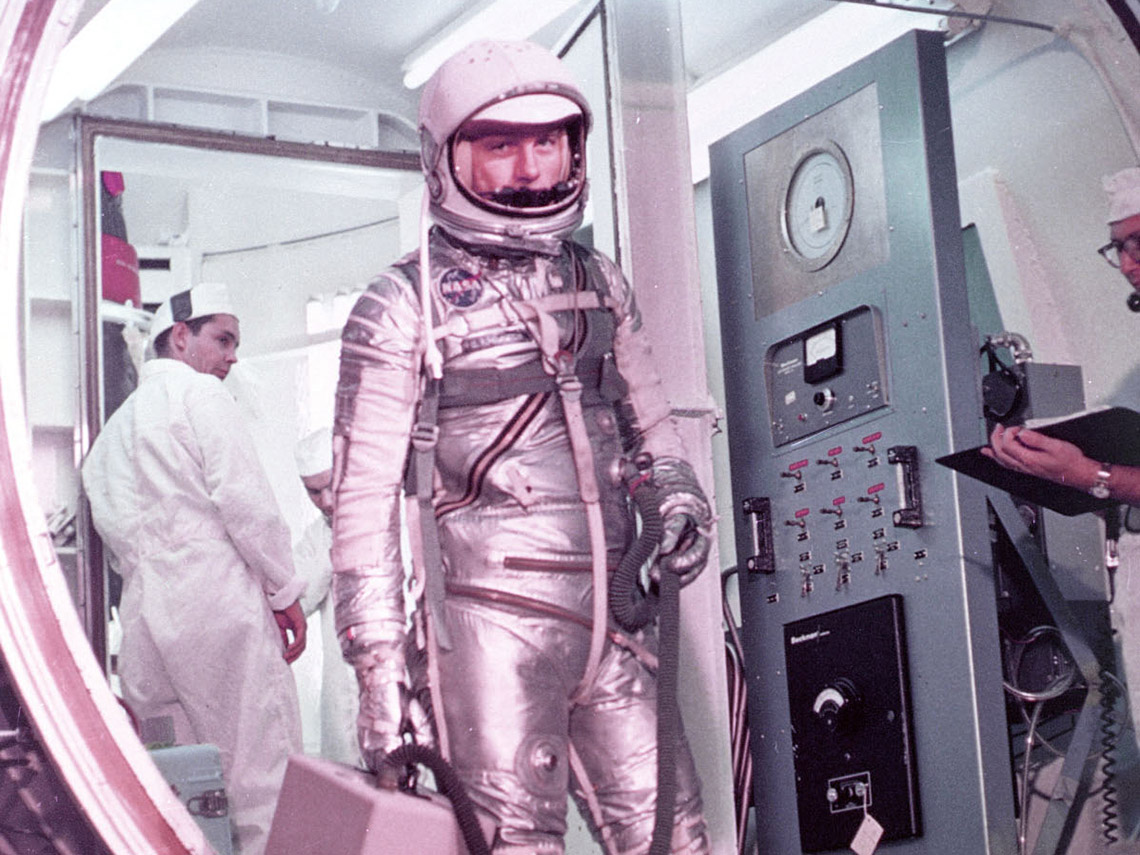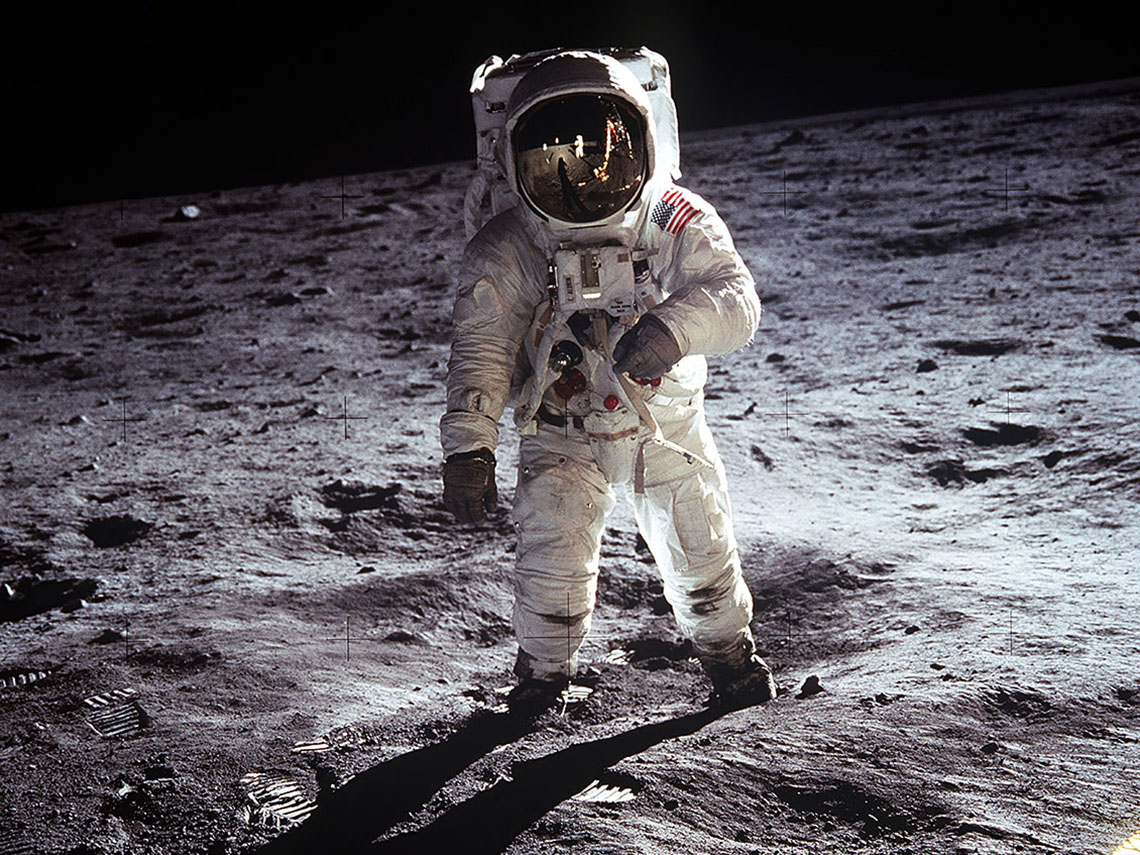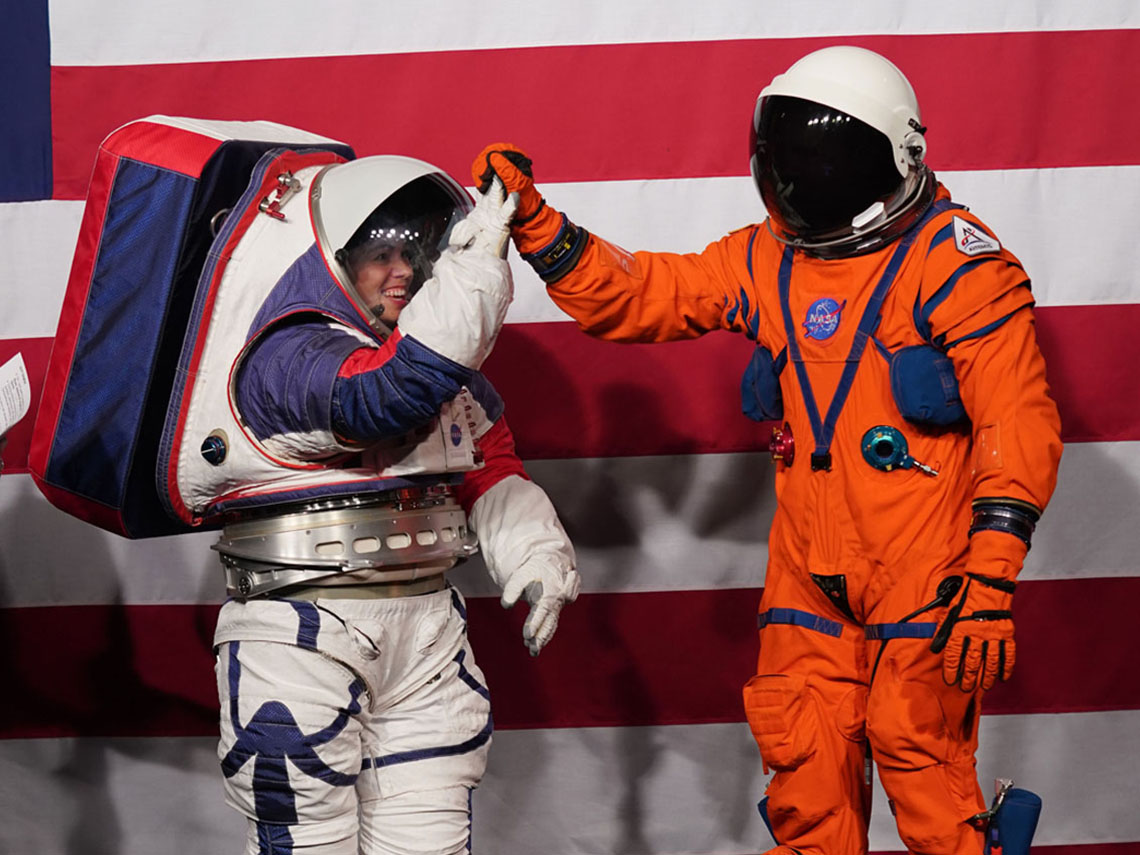Minds On
Living on the Moon
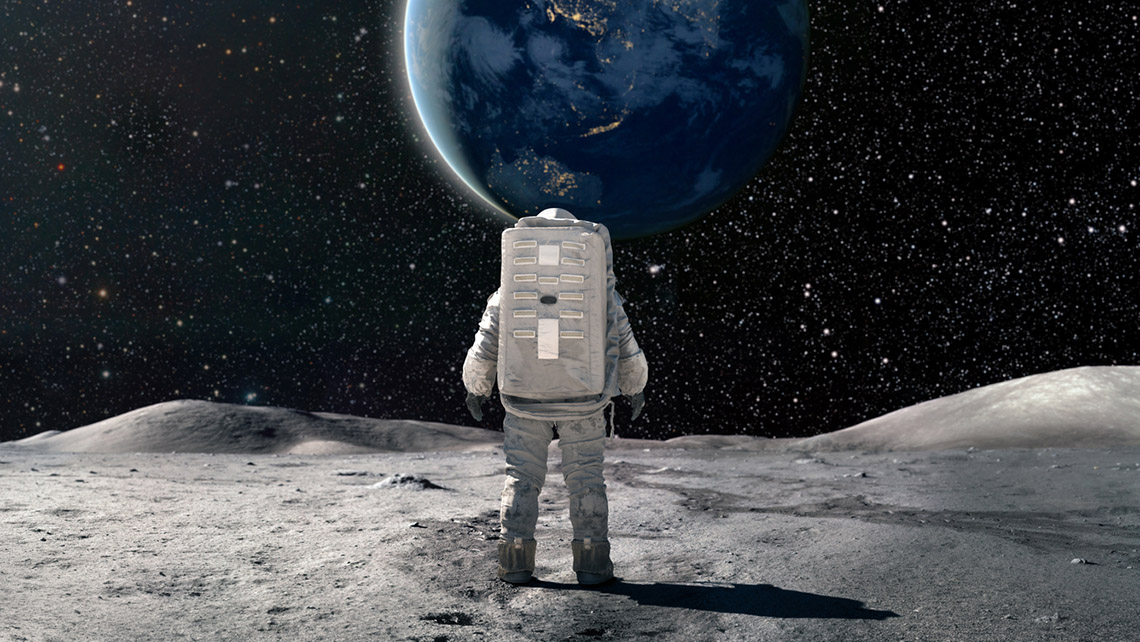
Consider the following questions:
- Is it possible for humans to live on the Moon?
- What are the conditions like on the surface of the moon?
- What special equipment might be needed to meet an astronaut’s physical needs for survival such as oxygen, water, shelter, and food?
Check out this video entitled “How Can I Live on the Moon?” to learn more about living on the moon. After exploring the video, record your thinking to the questions asked using a format of your choice such as in print, digitally or using an audio recording.
Action
Innovation in Canada
This learning activity features emerging technologies, STEM contributions, and Canadian innovations that are making a difference.

Fly me to the Moon
When a team of astronauts first stepped on the moon in 1969, it provided inspiration for a new generation of scientists and engineers. Many now dream of our first steps on Mars!
Before taking those historical first steps on Mars though, a number of space agencies, including the CSA (Canadian Space Agency) and NASA (National Aeronautics and Space Administration), are working together to build the Lunar Gateway – a small space station that will orbit the Moon with living quarters for a team of up to four astronauts. This future space station will also include a space laboratory and a homebase for teams travelling to the surface of the Moon. These trips will prepare astronauts for eventual travel to Mars with equipment tests and studies conducted on the Moon first.
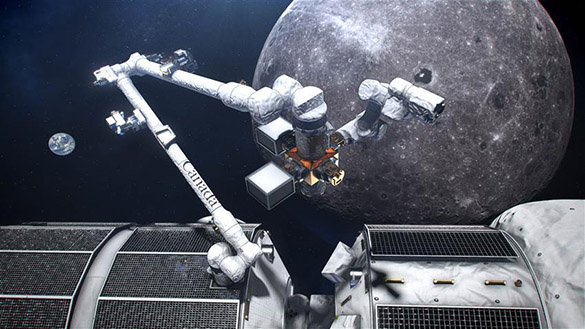
Proposed design of the Canadarm3
Canada will be contributing a key piece of equipment to the Lunar Gateway, the Canadarm3. The robotic arm will attach to the outside of the space station and receive incoming vessels and conduct repairs among other tasks. When the Gateway is not occupied by astronauts, the Canadarm3 will have an important role in keeping the station up and running and continuing with some experiments. Because of this contribution, Canada has been granted two seats aboard these future trips to the Moon, where our astronauts will live and study.
The first pieces of the Lunar Gateway are expected to launch in 2024 and it is hoped that the station will be up and running by 2026.
Check out the following video clip from TVOK News to learn more about the Lunar Gateway and the Canadarm3.
Brainstorm
Make a list
Using a format of your choice (such as in print, digitally or with an audio recording), create a list of some of the advantages of having a space station that orbits the Moon.
Press ‘List’ to compare your list to some possible answers.
According to the Canadian Space Agency, the Lunar Gateway project means:
- a deeper understanding of the possible health effects of cosmic radiation and solar storms on astronauts living and working outside of Earth’s protective magnetic field
- access to the lunar surface to conduct cutting-edge science tests and experiments
- a unique setting for technology demonstrations
- observations of the stars, our Sun, and our planet
- an easier return to Earth
(The Lunar Gateway Space Station, 2021)
What do astronauts need?
Working and living in space presents many challenges that are very different than living on Earth. Gravity, or rather absence of gravity, poses one of the biggest challenges, but there are several other factors to consider.
Astronauts have a lot of physical needs in space including:
- air to breathe (oxygen)
- challenges when eating
- sleeping without gravity
- taking care of their personal hygiene
- exercise
They also have social and emotional needs including:
- entertainment
- human interactions, including family members
When out of the spacecraft and exploring the Moon, there are even more challenges to consider.
Brainstorm
Brainstorm
When planning to explore the surface of the Moon, what challenges do astronauts need to consider that might be similar, or different than being inside the spacecraft?
What equipment might they need to survive and study when exploring the surface of the Moon?
Complete the Equipment List for Astronauts table in your notebook or using the following fillable and printable document. You can also use another method of your choice to record your ideas.
|
Equipment needed to survive on the Moon’s surface |
Equipment needed to live and survive on the space station |
|---|---|
Press the ‘Activity’ button to access Equipment List for Astronauts.
Learning check!
Imagine that you are an astronaut on a Lunar Gateway mission, and you need to make a repair to the Canadarm3 while orbiting the moon. Conditions in space mean that specialized equipment is needed. Let’s investigate some of the challenges that could be faced during this task and solutions to overcome them.
Match the problem to the protective equipment needed by an astronaut on a spacewalk.
Pause and Reflect
Reflection question
What other examples of challenges and their protective equipment might you add to the list of those you explored in the matching activity?
Protecting an astronaut in space
Astronauts on the Lunar Gateway will absolutely need specialized suits when working on the outside of the station (on a spacewalk) or when exploring the surface of the Moon. Spacesuits are actually considered mini spacecraft as they have to include everything that an astronaut needs to survive!
Let’s investigate some of the features of past spacesuits to gain a better understanding of what a suit for exploring the Moon or other planets might need to include.
Examine the following images and descriptions for more information.
The evolution of the spacesuit
Check out this Canadian Space Agency video, filmed onboard the International Space Station, where Canadian astronaut David Saint-Jacques outlines the features of an extravehicular activity (EVA) suit that astronauts wear during spacewalks.
Design your own spacesuit
Before we begin our task of designing our own spacesuit, check out this video to learn about the steps of the Engineering Design Process.
Your task is to design your own spacesuit to be used to explore the Moon and possibly other planets. Consider the atmosphere and climate, the surface conditions and that you will be gone from your spacecraft for very long periods of time. Use the Engineering Design Process to guide your design and create a detailed diagram with explanations of each component.
Press the following tabs to access some points to consider before beginning your design.
These are essential supplies and equipment that an astronaut needs in order to survive. Oxygen supply and carbon dioxide removal, pressurization, water supply, and temperature control are just some of the necessities.
When exploring new surfaces, astronauts will need to examine and collect samples. Being able to bend, twist, reach, grab and move somewhat freely and precisely are important considerations.
Astronauts need a way to communicate with one-another as well as with their spacecraft or command centre. Since they are also exploring and studying, they will likely want a way to record their observations and findings, both in an audio and visual format.
Tools not only help astronauts in their exploration and study of new surfaces, but they are also essential for repairs and adjustments to equipment. What tools might they need and where would they get stored on the spacesuit?
Using a method of your choice, create a detailed design for your spacesuit. Consider the following questions as you create your design:
- How is your spacesuit design different from the examples of past spacesuits that we explored? Be as creative as you can but remember your space suit needs to be functional for exploring parts of space that humans have never been to before!
- What features are necessary to include for survival while exploring the Moon or planets far away from Earth?
- Have you included any fun/nice to have features too? Be creative!
Consolidation
Reviewing and reflecting

Being an astronaut certainly takes courage. There are a lot of risks and dangers not only travelling to space, but also living and working there.
Using the format of your choice, share the features of your spacesuit design and how they would protect an astronaut from the different physical dangers in space.
Make sure to describe:
- at least two dangers and how your suit is designed to protect the astronaut against them
- some of your other design choices for the type of work that the astronauts need to do
Pause and Reflect
Reflection questions
- Do you think you would consider becoming an astronaut? What characteristics, skills and knowledge do you think astronauts need to explore space?
- What social and emotional challenges do you think astronauts on a long space mission might face?
If possible, discuss your answers with a partner or trusted adult.
Reflection
As you read through these descriptions, which sentence best describes how you are feeling about your understanding of this learning activity? Press the button that is beside this sentence.
I feel…
Now, record your ideas using a voice recorder, speech-to-text, or writing tool.
Press ‘Discover More’ to extend your skills.
Discover MoreDiscover more
Here are some instructions on how to build a spacesuit by the Canadian Space Agency. Remember that if you do not have these materials, you can improvise.
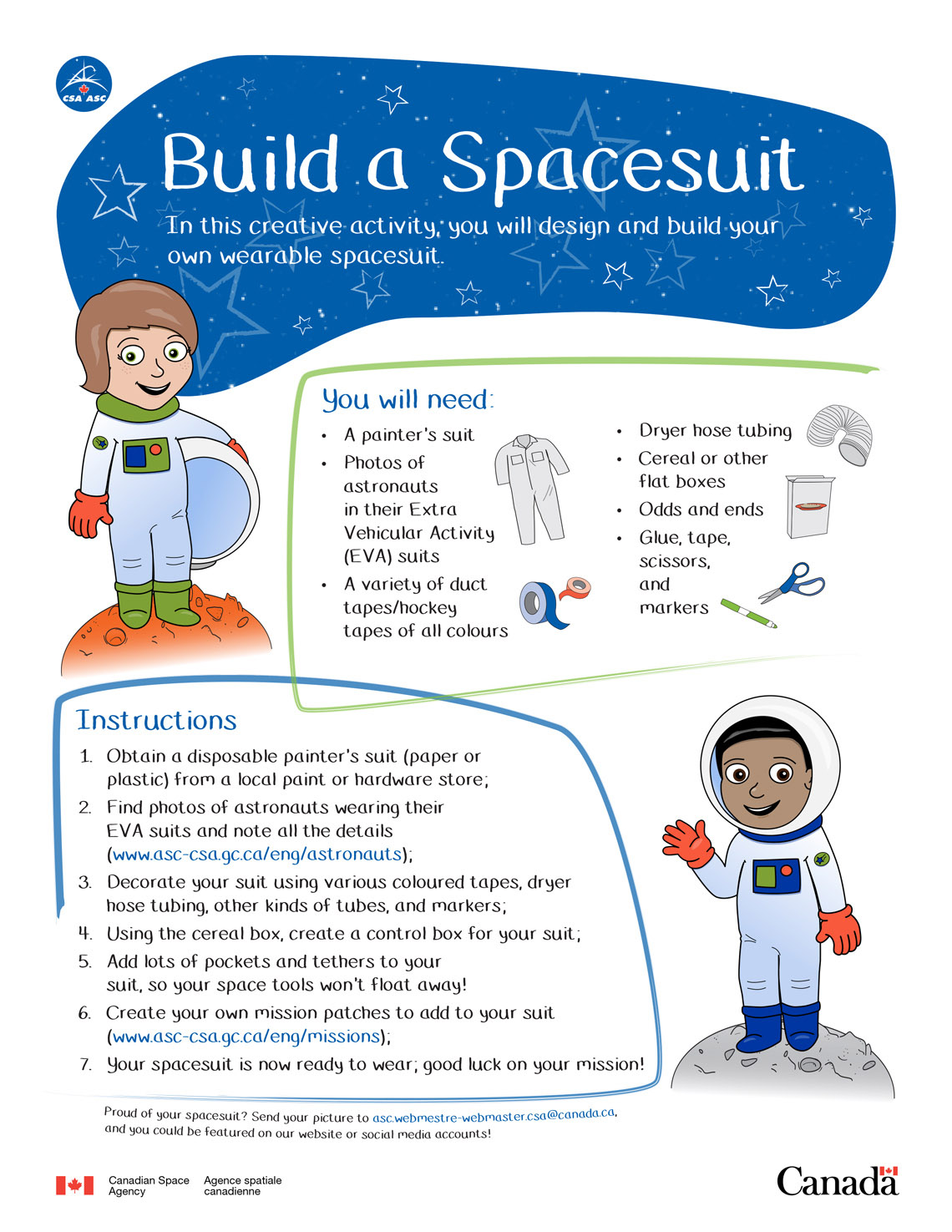 Description
Description
The following are instructions to build a spacesuit.
You will need: a painter’s suit, photos of astronaut in their Extra Vehicular Activity (EVA) suits, variety of duct tape/ hockey tapes of all colours, dryer hose tubing, cereal boxes or other flat boxes, odds and ends, glue tape, scissors, and markers.
Instructions:
- Obtain a disposable painter’s suit (paper or plastic) from a local paint, or hardware store
- Find photos of astronauts wearing their EVA suits and note all the details
- Decorate your suit using various coloured tapes, dryer hose tubing, other kinds of tubes, and markers
- Using the cereal box, create a control box for your suit
- Add lots of pockets and tethers to your suit, so your space tools won’t float away
- Create your own mission patches to add to your suit
- Your spacesuit is now ready to wear, good luck on your mission!

